The 110th Year Anniversary of World War I
It has been one hundred and ten years since World War I started. Some people underestimate the legacy and influence of World War One. There is no WWII without World War One. Also, World War One was the first international war of the 20th century that expanded military technology, caused the end of the Ottoman Empire, and was just before the Great Depression globally. It lasted for over 4 years with millions of people who lost their lives. World War One also was a war that dealt with complex alliances. The war had the Allied Powers (filled with France, the UK, America, Italy, Japan, Russia for a time, and other nations) vs. the Central Powers (filled with Germany, Austria-Hungary, the Ottoman Empire Bulgaria, and other nations). This war didn't just commence in Europe, but it spread into Asia, Africa, and the Middle East. The war started after one event which was the June 28, 1914, assassination of Archduke Franz Ferdinand by the Bosnian Serbian man Gavrilo Princip. This war signified the start of the end of many authoritarian monarchies and empires having huge economic and political power in the world. After the Russian October Revolution in 1917 by the Bolsheviks, Russia made peace with the Central Powers in early 1918. The war had a stalemate for years with a massive German offensive in March 1918. The Central Powers were defeated by a successful Allied counter-offensive in 1918 causing a collapse of the German frontline. Tanks, airplanes, biological warfare, and machine guns were utilized in the war. The Armistice of November 11, 1918, the Treaty of Versailles, and the Paris Peace Conference ended World War One. Yet, the weaknesses of the League of Nations contributed to World War II, which started in September 1939 by Hitler's evil Nazi forces. Therefore, World War One was one of the most destructive conflicts in human history that should be analyzed, so lessons can be learned.
The Causes of WWI
The causes of World War One were complex. One major cause of the war was the competing political and military alliances that clashed causing war in Europe and beyond. By the 19th century, many European powers used colonialism, imperialism, rape, racism, and other evils to steal lands in the four corners of the Earth. After the defeat of Napoleon and after the Berlin Conference, this competition continued. The 19th century saw many wars that signaled a prelude to World War One. European leaders want to maintain the balance of power for a time after the Concert of Europe (or after the end of the empire of Napoleon). After 1848, Britain grew, the Ottoman Empire was declining, and other events challenged the Concert of Europe concept. There was the rise of Prussia in German areas with Otto von Bismarck as the leader. The 1866 Austro-Prussian War established Prussian hegemony in German states, while victory in the 1870–1871 Franco-Prussian War allowed Bismarck to consolidate a German Empire under Prussian leadership. Avenging the defeat of 1871, or revanchism, and recovering the provinces of Alsace-Lorraine became an obsession of French policy and public opinion for the following few years, yet since the 1880s this concern was eclipsed by the conquest of a vast colonial empire and had disappeared from the programs of all French political parties as utterly unrealistic. The U.K. didn't want Prussia to get too powerful as Prussia had the strongest army in Europe.
To isolate France and avoid a war on two fronts, Bismarck negotiated the League of the Three Emperors between Austria-Hungary, Russia, and Germany. After the Russian victory in the 1877–1878 Russo-Turkish War, the League was dissolved due to Austrian concerns over Russian influence in the Balkans, an area they considered to be of vital strategic interest. Germany and Austria-Hungary then formed the 1879 Dual Alliance, which became the Triple Alliance when Italy joined in 1882. For Bismarck, the purpose of these agreements was to isolate France by ensuring the three Empires resolved any disputes between themselves; when this was threatened in 1880 by British and French attempts to negotiate directly with Russia, he reformed the League in 1881, which was renewed in 1883 and 1885. After the agreement lapsed in 1887, he replaced it with the Reinsurance Treaty, a secret agreement between Germany and Russia to remain neutral if either were attacked by France or Austria-Hungary. Bismarck wanted peace with Russia too. France responded to this by signing the Franco-Russian Alliance in 1894, followed by the 1904 Entente Cordiale with Britain. The Triple Entente was completed by the 1907 Anglo-Russian Convention. While these were not formal alliances, by settling long-standing colonial disputes in Asia and Africa, the notion of British entry into any future conflict involving France or Russia became a possibility. British and Russian support for France against Germany during the Agadir Crisis in 1911 reinforced their relationship, increasing Anglo-German estrangement. German industry increased. German industrial strength and production had significantly increased after 1871, driven by the creation of a unified Reich, French indemnity payments, and the annexation of Alsace-Lorraine. Backed by Wilhelm II, Admiral Alfred von Tirpitz sought to use this growth in economic power to build a Kaiserliche Marine, or Imperial German Navy, which could compete with the British Royal Navy for naval supremacy.
There were conflicts in the Balkans, because the Ottoman empire declined. In the Balkans, many people of Slavic descent, etc. wanted nationalism, not empire or monarchies. While Pan-Slavic and Orthodox Russia considered itself the protector of Serbia and other Slav states, they preferred the strategically vital Bosporus straits to be controlled by a weak Ottoman government, rather than an ambitious Slavic power like Bulgaria. Since Russia had its ambitions in northeastern Anatolia, while their clients had overlapping claims in the Balkans, balancing these divided Russian policy-makers and added to regional instability. Austria saw Serbian nationalism as a threat to their empire. Austrian statesmen viewed the Balkans as essential for the continued existence of their Empire and saw Serbian expansion as a direct threat. The 1908–1909 Bosnian Crisis began when Austria annexed the former Ottoman territory of Bosnia and Herzegovina, which it had occupied since 1878. Timed to coincide with the Bulgarian Declaration of Independence from the Ottoman Empire, this unilateral action was denounced by the European powers but accepted as there was no consensus on how to resolve the situation. Some historians see this as a significant escalation, ending any chance of Austria cooperating with Russia in the Balkans, while also damaging diplomatic relations between Serbia and Italy, both of whom had their expansionist ambitions in the region.
There was the Balkan League with Serbia, Bulgaria, Montenegro, and Greece. The Great Powers sought to re-assert control through the 1913 Treaty of London, which created an independent Albania while enlarging the territories of Bulgaria, Serbia, Montenegro, and Greece. However, disputes between the victors sparked the 33-day Second Balkan War, when Bulgaria attacked Serbia and Greece on June 16, 1913; it was defeated, losing most of Macedonia to Serbia and Greece, and Southern Dobruja to Romania. The result was that even countries that benefited from the Balkan Wars, such as Serbia and Greece, felt cheated of their "rightful gains", while for Austria it demonstrated the apparent indifference with which other powers viewed their concerns, including Germany. This complex mix of resentment, nationalism, and insecurity helps explain why the pre-1914 Balkans became known as the "powder keg of Europe." Then, the Sarajevo assassination ultimately led to World War One with the Triple Alliance treaty being tested.
The Assassination
World War One started on June 28, 1914, when there was the assassination of Archduke Franz Ferdinand, heir to the Austro-Hungarian throne. He was murdered in Sarajevo, along with his wife Sophie Duchess of Hohenberg, by Gavrilo Princip, a Bosnian Serbian person who was a member of the group The Black Hand. Princip used a FN 1910 semi-automatic handgun. Princip was part of the student revolutionary group called Young Bosnia. The assassination was a conspiracy with conspirators like Muhamed Mehmedbasic, Vaso Cubrilovic, Nedeljko Cabrinovic, Cvjetko Popovic, and Trifko Grabez including coordinating by Danilo Illic. The political assassination desired to free Bosnia and Herzegovina of Austria-Hungary rule to make a common South Slavic (Yugolsav) state. This situation caused the July Crisis and WWI. Austria-Hungary declared war on Serbia and WWI was on. Gavrilo Princip was caught, tried for murder and treason, and sent to 20 years in prison. Princip died when he was 23 years old over health issues on April 28, 1918. He had tuberculosis and malnutrition. On July 5, 1914, Austria-Hungary sought German support for a war against Serbia in case of Russian military intervention. German Empire gave assurances of support. By July 23, 1914, there was the beginning of the "Black Week." Austria-Hungary sent an ultimatum to the Kingdom of Serbia. The Kingdom of Serbia responded that night, agreeing to most but not all terms of the ultimatum. The Serbian response is seen as satisfactory by the Kaiser, but German diplomats do not pressure Austria to make peace. July 24, 1914, was when the Kingdom of Serbia mobilized expecting Austria to declare war after the refusal of the ultimatum. During the next day, Austria mobilized its military forces. Russia prepares for war in a partial mobilization. By July 28, 1914, Austria-Hungary officially declared war on Serbia. There was the Willy–Nicky correspondence. Wilhelm II, German Emperor, and Nicholas II of Russia communicated via telegram on July 29, 1914. Germany sent Russia an ultimatum by July 30, 1914. Sweden promotes neutrality in the war. Russia mobilized for war on July 31, 1914. Then, Germany declared war on Russia and mobilized its forces on August 1, 1914. France mobilized its forces and Italy was neutral during this time. There is the German Empire, and the Ottoman Empire signed a secret alliance treaty on August 1, 1914, too. This was the German-Ottoman alliance. Germany invaded Luxembourg on August 2, 1914. There is the first military action on the Western Front at Joncherey. From August 2-26, 1914, Germany besieged and captured fortified Longwy, "the Iron Gate to Paris", near the Luxembourg border, opening France to the mass German invasion. Throughout August 1914, more events happen during WWI. Germany declared war on France. Belgium denied permission for German forces to go through to the French border. Switzerland became neutral and built its defense forces. The war is now between Germany, Russia, and France. Germany invaded Belgium on August 4, 1914, in trying to outflank the French army.
Early War Developments
Britain protested against the violation of Belgian neutrality, guaranteed by the Treaty of London (1839), The German Chancellor replied that the treaty is just a chiffon de papier (a scrap of paper). The United Kingdom declared war on Germany, automatically including all dominions, colonies, etc. of the British Empire including Canada, Australia, and British India. America by August 1914 declared neutrality. That will obviously change. Germany captured the fortresses at Liege, Belgium. There were weapons fired in Melbourne, Australia by Australian troops. Australia attacks German forces in the Pacific. German Steamer SS Pfalz surrendered after being fired on by Fort Nepean, south of Melbourne, Australia. Montenegro declared war on Austria-Hungary, and the Ottoman Empire closed the Dardanelles. Austria-Hungary declared war on Russia, the Kingdom of Serbia declared war on Germany, and Spain became neutral. There was the Battle of the Frontiers when Germany had a victory against the British Expeditionary Force and France's Fifth Army.
The Battle of Mulhouse was a phase of the Battle of the Frontiers. Montenegro declared war on Germany. The Togoland Campaign started. France declared war on Austria-Hungary on August 11, 1914. The United Kingdom declared war on Austria-Hungary. The Battle of Halen was part of the Battle of Frontiers including the Battle of Lorraine. Germany invaded Belgium again in the Battle of Dinant. Germany came into East Africa. World War I continued with Germany occupying Brussels. Japan declared war on Germany, and the Russian army had a heavy defeat by the Germans in the Battle of Tannenberg. Russia captured Lviv in the Battle of Galicia. From August 27 to November, there was the siege of Tsingtao when the British and Japanese forces captured the German-controlled port of Qingdao in the Republic of China (1912–1949). The UK wins early Naval battles. By the end of 1914, World War I became more global. Germany is invaded in South Africa. Germany used U-boats to attack Allied Forces globally. Japan occupied the Marshall Islands. Ottoman forces bombard the Russian ports of Odessa and Sevastopol. France and the United Kingdom declared war on the Ottoman Empire. Sultan Mehmed VI declared war on the Allies of WWI. At the end of 1914, the war had victories among the Allied Powers and Central Powers. It was fundamentally a stalemate. As one source said,
“The first shock was an immense surprise…. Suddenly the enemy’s fire became precise and concentrated. Second by second the hail of bullets and the thunder of shells grew stronger. Those who survived lay flat on the ground, amid the screaming wounded and the humble corpses… Isolated heroes made fantastic leaps, but all to no purpose. In an instant it had become clear that all the courage in the world could not withstand this fire.”
-Charles de Gaulle, French officer, on the Battle of the Frontiers
Stalemate and Russia
In 1915, massive developments happened in World War One. In response to a North Sea military blockade that Britain imposed the previous November, on Feb 4, something happened. Germany declared a war zone in the waters around the U.K., beginning a campaign of submarine warfare. This would lead to the May 7 sinking of the British ocean liner Lusitania by a German U-boat. In Europe, Allied forces gained momentum by attacking the Ottoman Empire twice where the Sea of Marmara meets the Aegean Sea. Both the Dardanelles Campaign in February and the Battle of Gallipoli in April proved costly failures. On April 22, the Second Battle of Ypres began. It was during this battle that the Germans first used poison gas. Soon, both sides were engaged in chemical warfare, using chlorine, mustard, and phosgene gasses that injured more than 1 million men by the war's end. Russia, meanwhile, was fighting not just on the battlefield but at home as the government of Tsar Nicholas II faced the threat of internal revolution. That fall, the tsar would take personal control over Russia's army in a last-ditch attempt to shore up his military and domestic power.
American Involvement
By 1916, the two sides were largely stalemated, fortified in mile after mile of trenches. On Feb. 21, German troops launched an offensive that would become the longest and bloodiest of the war. The Battle of Verdun would drag on until December with little in the way of territorial gains on either side. Between 700,000 and 900,000 men died on both sides. Undeterred, British and French troops launched their own offensive in July at the Battle of the Somme. Like Verdun, it would prove a costly campaign for all involved. On July 1 alone, the first day of the campaign, the British lost more than 50,000 troops. In another military first, the Somme conflict also saw the first use of armored tanks in battle. At sea, the German and British navies met in the first and largest naval battle of the war on May 31. The two sides fought to a draw, with Britain enduring the most casualties. In 1917, everything will change.
Although the U.S. was still officially neutral at the start of 1917, that would soon change. In late January, British intelligence officers intercepted the Zimmerman Telegram, a German communique to Mexican officials. In the telegram, Germany tried to entice Mexico into attacking the U.S., offering Texas and other states in return. When the contents of the telegram were revealed, U.S. President Woodrow Wilson broke off diplomatic relations with Germany in early February. On April 6, at Wilson's urging, Congress declared war on Germany, and the U.S. officially entered World War I. On Dec. 7, Congress would also declare war against Austria-Hungary. However, it wouldn't be until the following year that U.S. troops began arriving in numbers large enough to make a difference in the battle. In Russia, roiled by domestic revolution, Tsar Nicholas II abdicated on March 15. He and his family would eventually be arrested, detained, and murdered by revolutionaries. That fall, on Nov. 7, the Bolsheviks successfully overthrew the Russian government and quickly withdrew from World War I hostilities.
The Treaty of Versailles
The Treaty of Versailles was one of the most important events during the end of World War One. It was a peace treaty signed on June 28, 1919. This treaty officially ended the state of war between Germany and most of the Allied Powers. The agreement was signed in the Palace of Versailles, exactly five years after the assassination of Archduke Franz Ferdinand, which caused the war in the first place. The other Central Powers on the German side signed separate treaties. The previous armistice of November 11, 1918, ended the actual fighting but more negotiations existed. These negotiations dealt with the payment of reparations, and other conditions and principles in ending the war. It took six months of Allied negotiations at the Paris Peace Conference to conclude the peace treaty. Germany was not allowed to participate in the negotiations before the signing of the treaty. The Treaty of Versailles was effective on January 10, 1920. The Allied Powers also included the UK, America, Australia, Canada, South Africa, New Zealand, India, France, Italy, Japan, Brazil, China, Greece, etc. The Treaty of Versailles required Germany to disarm, make territorial concessions, extradite alleged war criminals, agree to Kaiser Wilhelm being put on trial, recognize the independence of states whose territory had previously been part of the German Empire, and pay reparations to the Entente powers.
The most critical and controversial provision in the treaty was: "The Allied and Associated Governments affirm and Germany accepts the responsibility of Germany and her allies for causing all the loss and damage to which the Allied and Associated Governments and their nationals have been subjected as a consequence of the war imposed upon them by the aggression of Germany and her allies." The other members of the Central Powers signed treaties containing similar articles. This article, Article 231, became known as the "War Guilt" clause. Critics including John Maynard Keynes declared the treaty too harsh, styling it as a "Carthaginian peace", and saying the reparations were excessive and counterproductive. On the other hand, prominent Allied figures such as French Marshal Ferdinand Foch criticized the treaty for treating Germany too leniently. This is still the subject of ongoing debate by historians and economists.
The result of these competing and sometimes conflicting goals among the victors was a compromise that left no one satisfied. In particular, Germany was neither pacified nor conciliated, nor was it permanently weakened. The United States never ratified the Versailles treaty and made a separate peace treaty with Germany, albeit based on the Versailles treaty. The problems that arose from the treaty would lead to the Locarno Treaties, which improved relations between Germany and the other European powers. The reparation system was reorganized, and payments were reduced in the Dawes Plan and the Young Plan. Bitter resentment of the treaty powered the rise of the Nazi Party, and eventually the outbreak of a second World War. Although it is often referred to as the "Versailles Conference", only the actual signing of the treaty took place at the historic palace. Most of the negotiations were in Paris, with the "Big Four" meetings taking place generally at the French Ministry of Foreign Affairs on the Quai d'Orsay.
The Failure of the League of Nations
The League of Nations lasted from January 10, 1920, to April 18, 1946. It was a group that wanted world peace made up of many countries after World War I. The League of Nations failed, and it was a foundation for the modern-day United Nations. The League's primary goals were stated in its eponymous Covenant. They included preventing wars through collective security and disarmament and settling international disputes through negotiation and arbitration. Its other concerns included labor conditions, just treatment of native inhabitants, human and drug trafficking, the arms trade, global health, prisoners of war, and protection of minorities in Europe. The Covenant of the League of Nations was signed on June 28, 1919, as Part I of the Treaty of Versailles, and it became effective with the rest of the Treaty on 10 January 1920. Australia was granted the right to participate as an autonomous member nation, marking the start of Australian independence on the global stage. The concept of a peaceful community of nations had been proposed as early as 1795, when Immanuel Kant's Perpetual Peace: A Philosophical Sketch outlined the idea of a league of nations to control conflict and promote peace between states. Kant argued for the establishment of a peaceful world community, not in the sense of a global government, but in the hope that each state would declare itself a free state that respects its citizens and welcomes foreign visitors as fellow rational beings, thus promoting peaceful society worldwide The first meeting of the Council of the League took place on January 16, 1920, and the first meeting of the Assembly of the League took place on November 15, 1920. In 1919, U.S. President Woodrow Wilson won the Nobel Peace Prize for his role as the leading architect of the League. It had as many as 58 members. The League didn't have an armed force. It depended on the victorious Allies of World War I (Britain, France, Italy, and Japan were the initial permanent members of the Executive Council) to enforce its resolutions, keep to its economic sanctions, or provide an army when needed. The Great Powers were often reluctant to do so.
Sanctions could hurt League members, so they were reluctant to comply with them. During the Second Italo-Ethiopian War, when the League accused Italian soldiers of targeting International Red Cross and Red Crescent Movement medical tents, Benito Mussolini responded that "the League is very well when sparrows shout, but no good at all when eagles fall out." The League of Nations moved its headquarters from London to Geneva by November 1, 1920. French and English were the official languages of the League of Nations. In 1939, a semi-official emblem for the League of Nations emerged: two five-pointed stars within a blue pentagon. They symbolized the Earth's five continents and "five races" (we know that race is a social construct). A bow at the top displayed the English name ("League of Nations"), while another at the bottom showed the French ("Société des Nations").
The League of Nations failed because of many reasons. It could not handle the imperialism of the Axis Powers during the 1930's, America never joined the League of Nations, and it lacked the enforcement power to promote its policies and reforms that it desired. Japan and Germany left in 1933, Italy left in 1937, and Spain left in 1939. The Soviet Union only joined in 1934 and was expelled in 1939 after invading Finland. Furthermore, the League demonstrated an irresolute approach to sanction enforcement for fear it might only spark further conflict, further decreasing its credibility. One example of this hesitancy was the Abyssinia Crisis, in which Italy's sanctions were only limited from the outset (coal and oil were not restricted), and later altogether abandoned despite Italy being declared the aggressor in the conflict. The onset of the Second World War in 1939 showed that the League had failed its primary purpose; it was largely inactive until its abolition. The League lasted for 26 years; the United Nations (UN) replaced it in 1946 and inherited several agencies and organizations founded by the League. Current scholarly consensus views that, even though the League failed to achieve its main goal of world peace, it did manage to build new roads towards expanding the rule of law across the globe; strengthened the concept of collective security, gave a voice to smaller nations; fostered economic stabilization and financial stability, especially in Central Europe in the 1920s; helped to raise awareness of problems like epidemics, slavery, child labor, colonial tyranny, refugee crises and general working conditions through its numerous commissions and committees; and paved the way for new forms of statehood, as the mandate system put the colonial powers under international observation. Professor David Kennedy portrays the League as a unique moment when international affairs were "institutionalized", as opposed to the pre-First World War methods of law and politics.
The African American Role in World War One
There was a strong African American presence in World War One. After the war took place, many African Americans joined the Allied armies. Many people know of the heroism shown by Eugene Bullard and Bob Scanlon, who joined the French Foreign Legion within weeks of the start of the war. 12 Black Americans joined the Legion at the start, and only 2 survived the war. Back in those days, the U.S. Armed Forces were segregated in WWI. Some black leaders tried to end segregation and discrimination in the armed forces The NAACP or the National Association of the Advancement of Colored People was formed in 1909 to advocate for black equality. W.E.B. DuBois, who was one leader in the NAACP back then, wanted black people to join the war efforts in order to have human rights. W.E.B Dubois believed in the concept of double consciousness. That means that African Americans have to reconcile our black African heritage with the reality of a white racist society in seeking black liberation in the world. Many African American soldiers were mistreated on the battlefield, in America, and were lynched after the war was over. The Georgia Selective Service system in 1917 restricted even healthy African American men like 21-year-old Marvin Kirk. White racists didn't want black people to be drafted, because they didn't want their regional agricultural economy harmed.
Many African Americans in the military were segregated to support and maintenance jobs, some didn't have toilets or facilities to wash clothes, and some were very cramped in living spaces. There were over 200,000 American Americans who served with the American Expeditionary Force on the Western Front, while 170,000 remained in the United States. Wilbur Little was an African American soldier who was lynched in Georgia after returning from WWI. He refused to take his uniform off in power. A black man wearing a uniform was an act of power, especially in Jim Crow South. There were times when African Americans were celebrated when they returned home from war. In New York City, 3,000 of the Harlem Hellfighters were greeted with a parade (with black and white Americans celebrating in the streets of New York in jubilation). Many African Americans fought in combat like the 369th Infantry Regiment (or the Harlem Hellfighters). They worked with the French Army 171 members of the 368th were awarded the Legion of Merit. The American War Department restricted black soldiers from fighting when possible or even heading regiments in battle (like forcibly retiring Lieutenant Colonel Charles young) This inspired William Patterns, a future black communist and activist to call WWI "the war was a white man's war." Germany wanted African American soldiers to join their cause by using propaganda back then.
Corporal Freddie Stowers of the 371st Infantry Regiment that was seconded to the 157th French Army division called the Red Hand Division in need of reinforcement under the command of the General Mariano Goybet was posthumously awarded a Medal of Honor—the only African American to be so honored for actions in World War I. During action in France, Stowers had led an assault on German trenches, continuing to lead and encourage his men even after being twice wounded. Stowers died from his wounds, but his men continued the fight and eventually defeated the German troops. Stowers was recommended for the Medal of Honor shortly after his death, but the nomination was, according to the Army, misplaced. In 1990, under pressure from Congress, the Department of the Army launched an investigation. Based on findings from this investigation, the Army Decorations Board approved the award of the Medal of Honor to Stowers. On April 24, 1991–73 years after he was killed in action—Stowers' two surviving sisters received the Medal of Honor from President George H. W. Bush at the White House. The success of the investigation leading to Stowers' Medal of Honor later sparked a similar review that resulted in six African Americans being posthumously awarded the Medal of Honor for actions in World War II. Vernon Baker was the only recipient who was still alive to receive his award.
African Americans were typically placed into labor battalions with around 160,000 of the 200,000 African Americans who were shipped out to France in 1917 finding themselves placed in one. These labor battalions were disrespected by racists and the men in them were "driven to the brink of physical and emotional exhaustion." Jim Crow was extended to the camps where the African American soldiers were stationed, and white officers would frequently remind African American soldiers of this. The 370th Infantry Regiment was informed a black member of a labor battalion had recently been hanged in the same square the unit was now assembling in a small town outside the Lorraine region. In support of an attempt to impose American racial policy on France, U.S. military authorities sent a memo to the mayors of the Meuse division upon the arrival of the African American 372nd Infantry Regiment (The "Red Hand") in 1918. It asked that the French not integrate the Black troops into French society.
The request was generally disregarded by the French. The way they were treated by white Americans in France differed markedly from the way they were treated by French troops and civilians who dealt with them roughly as equals. This left the African Americans disillusioned. African American soldiers interacted with colonial troops stationed in France, and they had already read about them in African American newspapers. The French military had reframed the debate for African Americans at home, in that France recognized that Black Americans had an "important combatant role in the defense of the nation." These stories and experiences fueled African American racial pride which contributed to their mass disillusionment when they returned home. YMCA services in France were also segregated sixty African American y-secretaries, among them twenty-three African American women served the 200,000 black soldiers stationed in France, only three of these arrived before the armistice – including Addie W. Hunton and Kathryn M. Johnson. The YMCA work provided entertainment, recreation, and education to the vast majority of African American troops as they had more time on their hands since they served in labor battalions. President Coolidge wrote these words in a letter to Charles Gardner in 1924,
"During the war 500,000 coloured men and boys were called up under the draft, not one of whom sought to evade it. They took their places wherever assigned in defence of the nation of which they are just as truly citizens as are any others."
According to the historian Chad L Williams, "African American soldiers' experiences in the war and their battles with the pervasive racial discrimination in the U.S. military informed their postwar disillusionment and subsequent racial militancy as veterans." Examples of this racial militancy can be seen in the prominent roles that some African American WWI veterans played in the civil rights movement. For example, William N. Colston, an African American veteran who had served in the 367th infantry during the war, published several essays in the US's leading radical African American magazine- the Messenger. These articles aimed to illustrate the experiences which African Americans soldiers had throughout the war. African Americans' wartime experiences also played a key role in the formation of the League for Democracy which was a Civil Rights movement formed by African American soldiers serving in the 92nd Division with its key aim being to combat racial discrimination within the military. Many black Americans wanted to go to Liberia to escape the racism of America. Some participated against fascists in Spain (like James Peck, Oliver Law, and Salaria Kea) and helped the Ethiopians to defeat the fascist forces of Mussolini during the 1930's. After WWI, some of the most vicious oppression came against African Americans with Red Summer, lynching, etc. Red Summer was from 1918-1922 when white racists used riots to murder innocent black men, women, and children in Chicago, St. Louis, Tulsa, etc.
*Many of my relatives were African American veterans of World War I. For example, my late first cousin John Quincy Adams Scott (b. 1897) was a veteran of World War One. John Quincy Adams Scott (his mother was Roberta Scott, and his grandmother was Sarah Claud) and I are descendants of my 5th grandmother Zilphy Claud (1820-1893). John Quincy Adams is the 2nd great-grandchild of Zilphy Claud. He came back to America from Brest, France to Newport News, Virginia on June 26, 1919. The ship was named Konningin der Nederlanden. He was part of the United States Army as a Private of the Co. A. 548th Engineers. My late great uncle Calvin Bailey (1892-1954) was a member of the 540th Engineers of WWI. Calvin Bailey and I share the ancestors of my 3rd great-grandparents of Johnson Brickhouse (b. 1826) and Julia Perkins (b. 1835). One child of Johnson Brickhouse and Julia Perkins was my 2nd great grandmother Esther Brickhouse Bailey (1862-1955). Esther Brickhouse Bailey married Harry Bailey (1855-1943) and one of their children was Calvin Bailey. Calvin Bailey married Carry Bell (her parents are John and Vergie Bell) in 1919 in Northampton County, Virginia (which is on the Virginian Eastern Shore). L. M. Baker performed the ceremony. Calvin Bailey was part of the African American Company D, 540th Engineers in World War One. He was a Private who was on the ship called Britannia that traveled from Marseille, France to Brooklyn, New York City on June 6, 1919.
My late 2nd cousin Howard S. Lowe (1897-1958) was a World War One Veteran too. He was part of the U.S. Army and was born in Virginia. His parents were Bishop Charles Wesley Lowe (1875-1954) and my 1st cousin Louisa A. Sykes (1876-1955). The parents of Louisa A. Sykes were Willis Sykes (b. 1832) and my 4 great-grandaunt Lydia Claud (b. 1842). Lydia Claud's mother was my 5th great grandmother Zilphy Claud (1820-1893). According to my late 2nd cousin Elgin Madison Lowe (1914-2000), Howard S. Lowe was over 6ft tall and weighed over 200 pounds. Howard would tell stories about his events in France during WWI. He worked at Miners Manufacturing Company, and he was a barber at Colden's Barber Shop on East Washington Street. He lived in Philadelphia just before his passing. Howard S. Lowe was part of D. Company 545th Engineers Service Battalion of the rank of Private. He was on the ship called Rijndam, and it traveled to Hoboken, New Jersey (he was originally from Suffolk, Virginia) on September 23, 1918. Howard S. Lowe married Josephine Mayfield (1899-1974) first and his second wife was Frankie Knight (b. 1903).
Lessons Learned
World War One was an event that changed the world forever. This war existed between the tensions of world Empires found in Europe, Africa, and Asia. Great Britain, France, Germany, the Ottoman Empire, Russia, Austria-Hungary, etc. wanted to control as many resources of the world as possible. The European powers never solved their competition to gain the world's resources via colonialism, imperialism, genocide, stealing lands, and other forms of evil actions. Then, the assassination of Archduke Franz Ferdinand, heir to the Austro-Hungarian throne, caused World War I officially. He was murdered by the Bosnian Serbian person named Gavrilo Princip and other people found in the Black Hand. The Allied Powers defeated the Central Powers (made up of Germany, The Ottoman Empire, Austria-Hungary, etc.). The war saw tanks, planes, and chemical warfare utilized at a high level for the first time in human history. During the war, there was the 1918 Spanish flu pandemic, the Russian Revolution (that caused the Soviet Union to exist, and the Soviet Union left the Allied side to be neutral by the end of WWI), and the destruction of the Ottoman Empire. After the events of World War One, the Treaty of Versailles existed, and the League of Nations was formed. The League of Nations didn't cause great peace internationally, because the League of Nations had a problem with its rules being enforced in a lax fashion, it wasn't strong enough to handle international disputes, and massive economic problems caused the organization to lack funding to handle its policies. Ironically, the League of Nations was a foundation for the creation of the United Nations after World War II (which started in September 1939). The lesson now is that we must oppose imperialism, colonialism, and capitalist exploitation. Also, another lesson of WWI is that we have to learn about international affairs as we can't live in the sand in one nation. What happens overseas can happen here in the United States of America (as Russian warships are having military drills in Cuba recently). With the wars in Ukraine, Gaza, and other places of the world, we must be on the sacrosanct, righteous path of righteousness, truth, and justice.

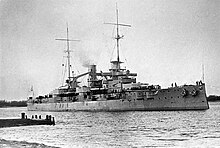
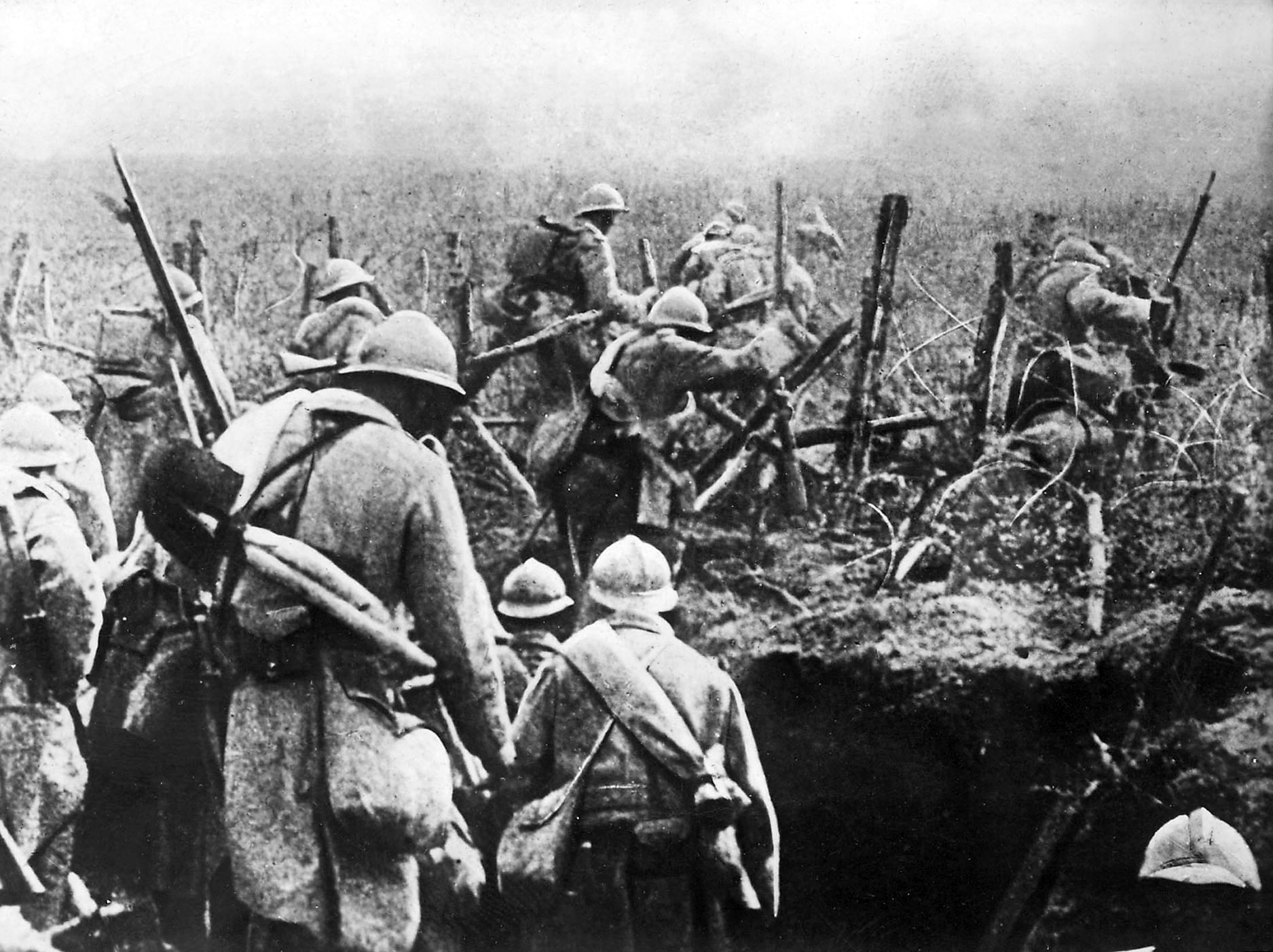

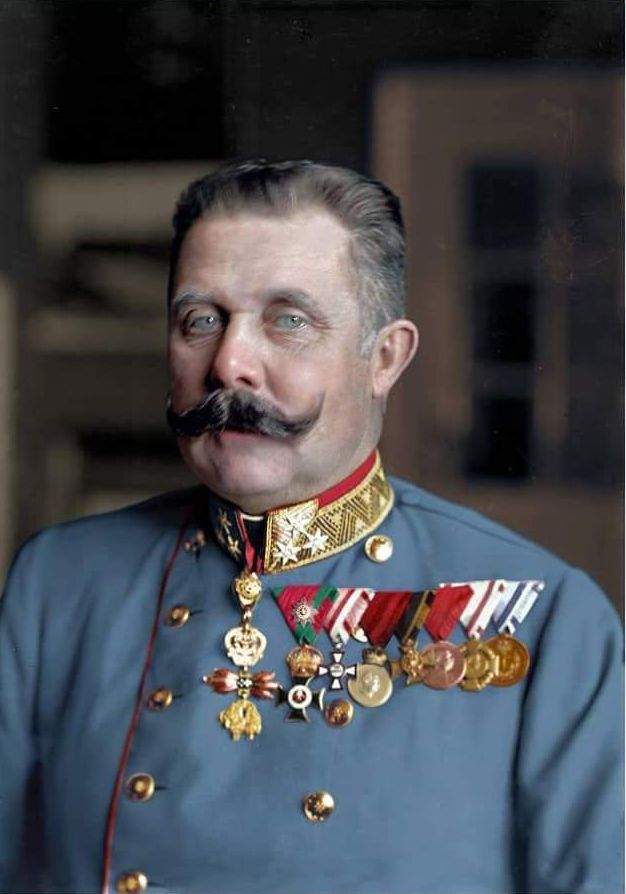




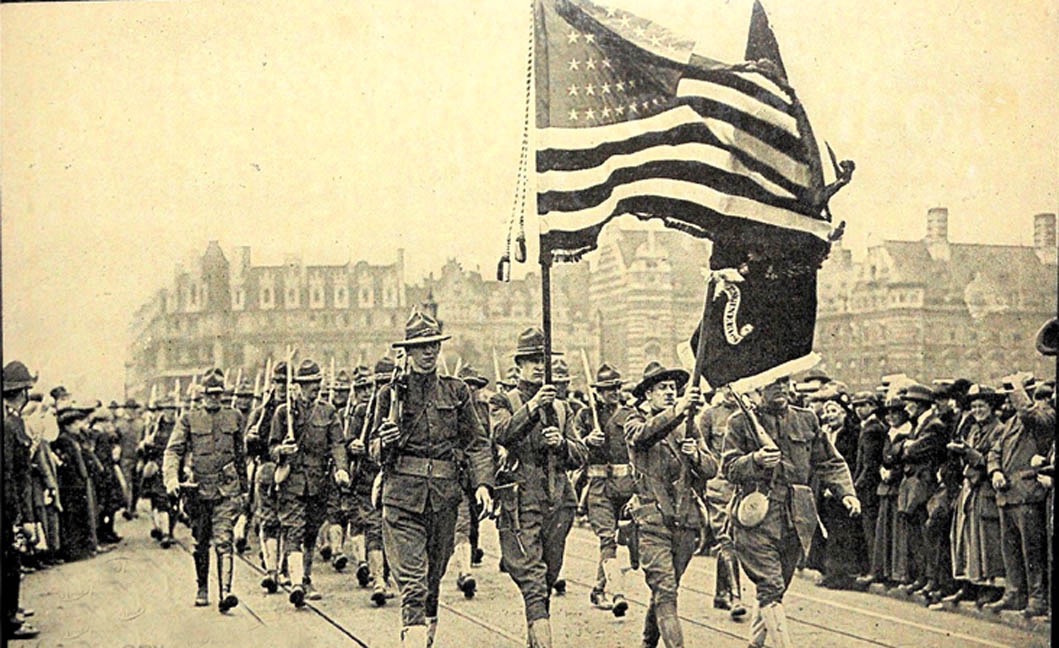

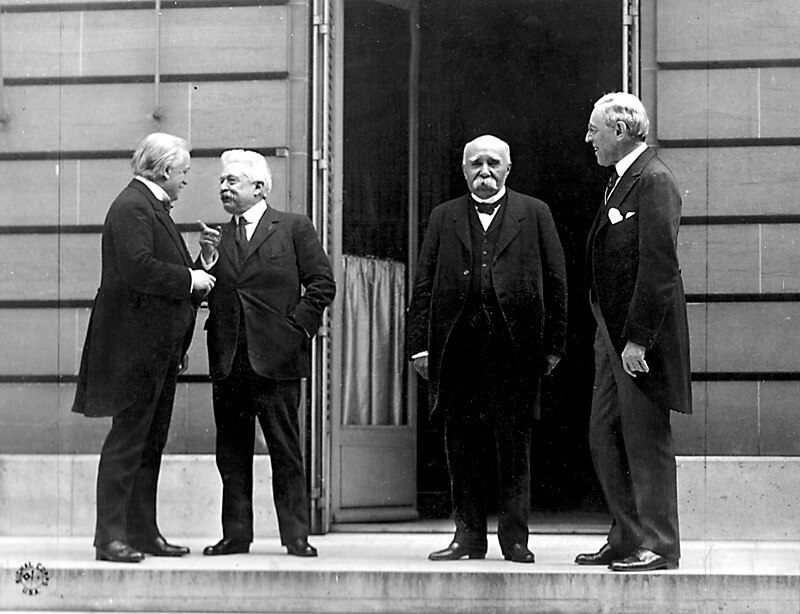
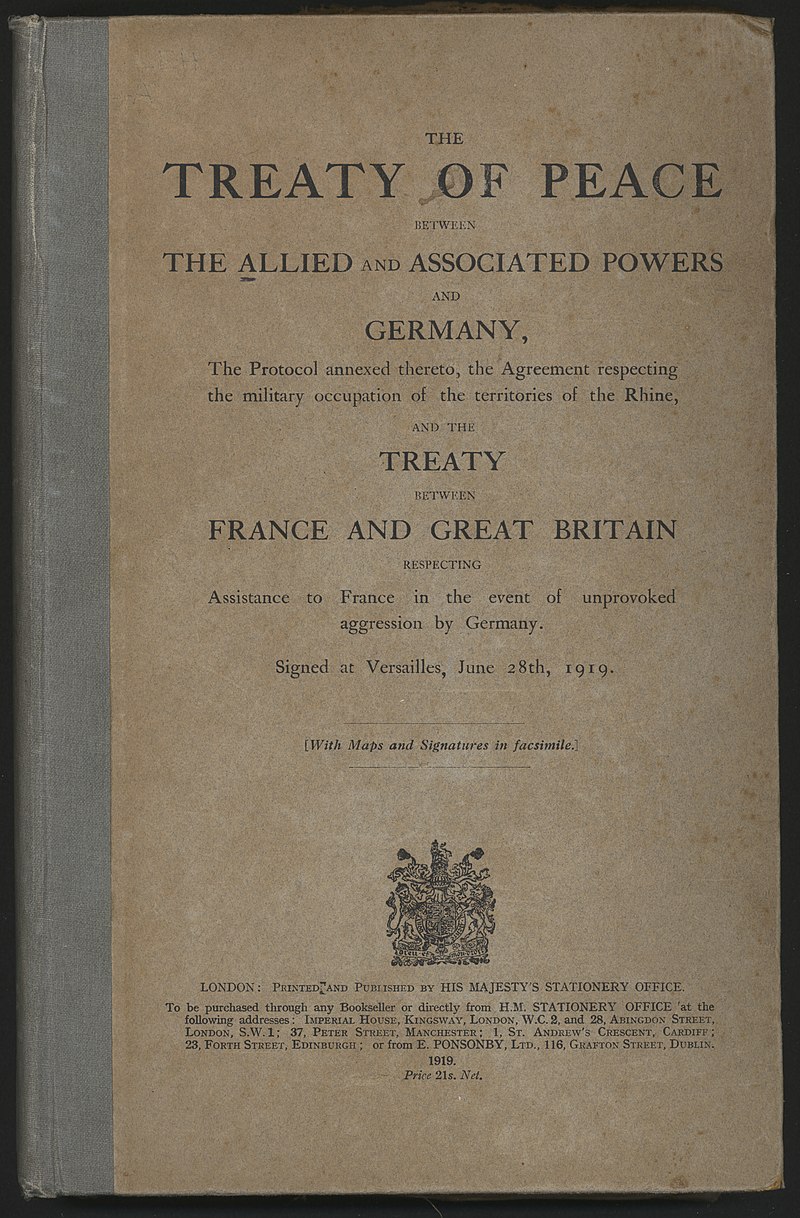

.svg/800px-Flag_of_the_League_of_Nations_(1939).svg.png)



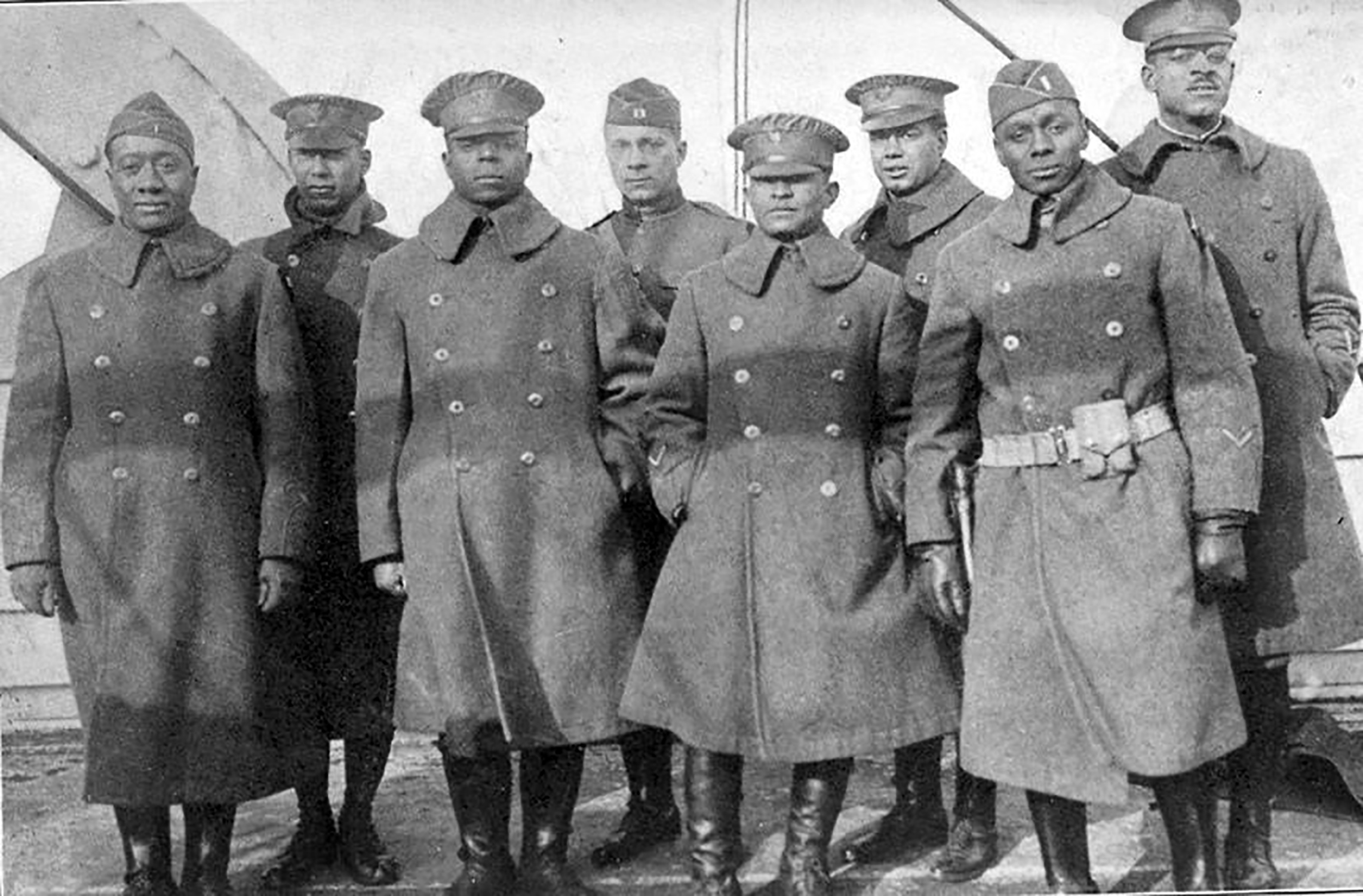
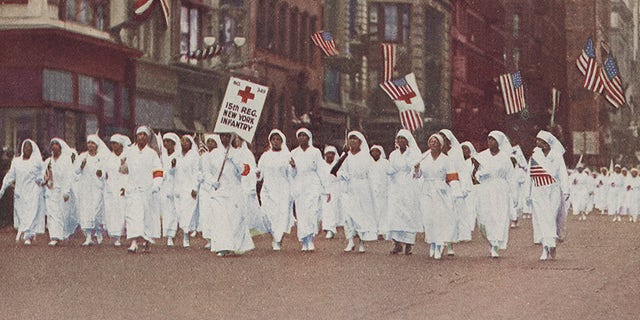
:max_bytes(150000):strip_icc()/WWI-DC-memorial-doric-4640-crop-5920ce715f9b58f4c048d559.jpg)